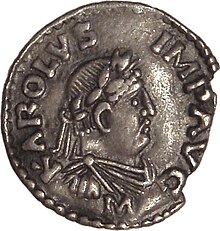
Back Metallismus German Metallism Estonian Métallisme French 金属主義 Japanese Pieniądz kruszcowy Polish Metalismo Portuguese Металлистическая теория денег Russian Металізм Ukrainian

Metallism is the economic principle that the value of money derives from the purchasing power of the commodity upon which it is based. The currency in a metallist monetary system may be made from the commodity itself (commodity money) or it may use tokens (such as national banknotes) redeemable in that commodity. Georg Friedrich Knapp (1842–1926) coined the term "metallism" to describe monetary systems using coin minted in silver, gold or other metals.[1]
In metallist economic theory, the value of the currency derives from the market value of the commodity upon which it is based independent of its monetary role. Carl Menger (1840–1921) theorized that money came about when buyers and sellers in a market agreed on a common commodity as a medium of exchange in order to reduce the costs of barter. The intrinsic value of that commodity must be sufficient to make it highly "saleable", or readily accepted as payment. In this system, buyers and sellers of real goods and services establish the medium of exchange, independently of any sovereign state. Metallists view the state's role in the minting or official stamping of coins as one of authenticating the quality and quantity of metal used in making the coin. Knapp distinguished metallism from chartalism (or antimetallism), a monetary system in which the state has monopoly power over its own currency and creates a unique market and demand for that currency by imposing taxes or other such legally enforceable debts upon its people which they can only pay by using that currency.
Joseph Schumpeter (1883–1950) distinguished between "theoretical" and "practical" metallism. Schumpeter categorized the Menger position, that a commodity link is essential to understanding the origins and nature of money, as "theoretical metallism". He defined "practical metallism" as the theory that although a sovereign state has unfettered power to create non-backed currencies (money with no intrinsic or redeemable commodity value), it is more prudent to adopt a backed currency system.[2]
- ^
von Mises, Ludwig (2009) [1953]. The Theory of Money and Credit. Translated by Batson, Harold Edward (reprint ed.). Auburn, Alabama: Ludwig von Mises Institute. p. 473. ISBN 9781610163224. Retrieved 16 November 2020.
First of all, there is the use of the term 'metallism'. The expression comes from Knapp.
- ^ Ramón Tortajada (1999). The Economics of James Steuart. Routledge., p. 187.